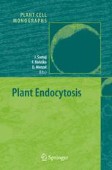Search
Search Results
-
The Retinoblastoma Gene Family in Cell Cycle Regulation and Suppression of Tumorigenesis
Since its discovery in 1986, as the first tumor suppressor gene, the retinoblastoma gene (Rb) has been extensively studied. Numerous biochemical and...
-
Senescence and Cell Cycle Control
In response to various stresses, such as telomere shortening during continuous proliferation, oxidative stress, DNA damage and aberrant oncogene...
-
Telomeres in fungi
Telomeres are the functional elements concluding and defining each linear chromosome in eukaryotes. They play an essential role in protecting genetic...
-
Systems Biology: necessary developments and trends
At the end of this definition of Systems Biology through exampling, we discuss ambitions, goals, and challenges relating to this new discipline. We...
-
Control of Cell Proliferation and Growth by Myc Proteins
Myc proteins act as signal transducers that alter cell proliferation in dependence on signals from the extracellular environment. In normal cells,...
-
Comparative genomics and gene finding in fungi -- Supplement
Online Supplement to Chapter 1
-
Regulation of the heat shock response by heat shock transcription factors
The heat shock response is characterized by a rapid and robust increase in heat shock proteins upon exposure to protein-damaging stresses. This...
-
The genome of the filamentous fungus Ashbya gossypii: annotation and evolutionary implications
The 9.2 Mb genome of the filamentous fungus Ashbya gossypii consists of seven chromosomes carrying 4718 protein coding genes, 194 tRNA genes, at...
-
Template-induced protein misfolding underlying prion diseases
Proteins with prion properties are closely associated to a class of fatal neurodegenerative illnesses in mammals and to the emergence and propagation...
-
Methods and Molecular Tools for Studying Endocytosis in Plants---an Overview
Proteins of the endocytosis machinery in plants, such as clathrin and adaptor proteins, were isolated and characterized using combinations of...
-
Tip Growth and Endocytosis in Fungi
Recent advances in molecular cell biology have provided new insights into different cellular processes that all turn out to contribute to...
-
The Material-Independent Signatures of Life.Forensic Tools of Astrobiology
Biological life is intimately related to the geochemical conditions on Earth and is fit for this planet’s energy flux. It has often been suggested...
-
The Early History of Bio-Information
In a general sense, the information level of a structure equals the minimum number of instructions needed to specify the structure (Orgel 1973). The...
-
Assembling the Early Puzzle of Life
So far no theory, no approach, no set of formulas, and no blackboard scheme have been found satisfactory in explaining the origin of life. The...
-
The Early History of Bioenergy
Energy is most commonly defined as the potential to do work. The maintenance of the living state requires a constant flow of energy through the...
-
1 Phospholipid synthesis in mammalian cells
Phospholipids are the main components of biological membranes and as such act as the major permeability barrier between cells and the extracellular...
-
2 Phospholipid synthesis and dynamics in plant cells
Phospholipids represent the second family of lipids after the galactolipids in photosynthetic tissues and the first in non-photosynthetic tissues....
-
11 Plant sphingolipids
Plants contain a multiplicity of sphingolipid metabolites, such as long-chain bases, long-chain base phosphates, ceramides, glycosylceramides,...
-
12 Baker’s Yeast: a rising foundation for eukaryotic sphingolipid-mediated cell signaling
Saccharomyces cerevisiae has been an invaluable tool for the dissection of sphingolipid metabolic pathways and cloning of enzymes involved in...
-
5 Sterol metabolism and functions in higher plants
Higher plants synthesize a bewildering array of sterols, with sitosterol, stigmasterol, and 24-methylcholesterol as major compounds. All plant...
